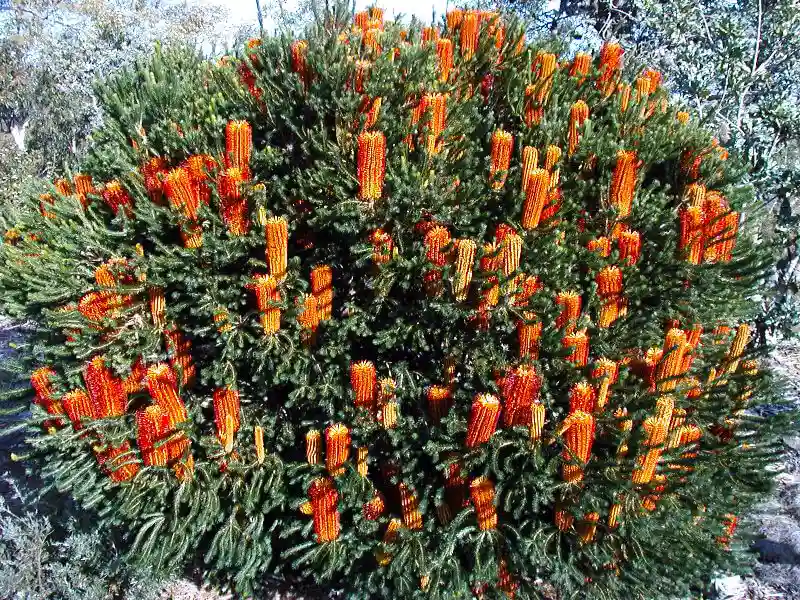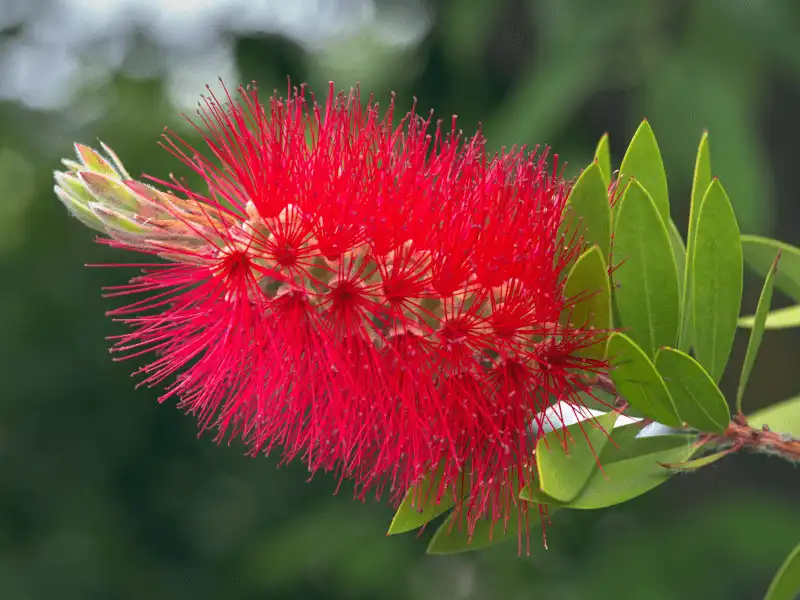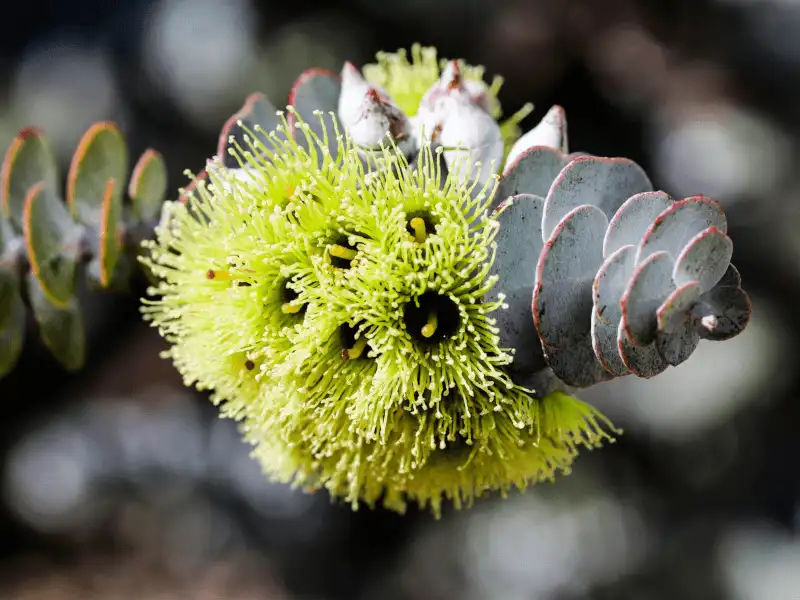
| Botanic name | Eucalyptus Kruseana |
| Other names | Bookleaf Mallee |
| Main Origin | Inland Southern Western Australia |
| Mature size | 2 – 3 m x 2 – 3 m (w x h) |
| Mature form | Lateral spreading, sprawling |
| Foliage | Silvery blue or green, round or heart-shaped |
| Growth rate | Slow |
| Position | Full sun |
| Soil | Well-drained sandy, gravelly, clay, and other soils |
| Water | Minimal, occasional deep watering |
| Climate | Arid, semi-arid, Mediterranean, warm-temperate |
| Flower | Creamy yellow from late summer to winter |
| Use | Feature plant, ornamental planting, privacy screening |
| Notes | Suitable for coastal sites, ideal for pot planting |
IN THIS ARTICLE
Bookleaf Mallee
Eucalyptus Kruseana is a true treasure amongst miniature eucalyptus trees. This small mallee features unique, beautiful leaves. The ornate arrangement on the branch resembles overlapping book pages, lending its common name ‘Bookleaf Mallee’.
With a modest height of only 2 to 3 metres, Bookleaf Mallee is a small and attractive eucalypt, perfect for intimate gardens, container plantings, and urban landscapes. Its straggly branches are adorned by striking, silvery-blue leaves, making it a captivating, eye-catching specimen wherever it is planted.
With its ornamental foliage similar to Eucalyptus pulverulenta (Silver-leaved Mountain Gum), Bookleaf Mallee is highly sought after in the florist industry.
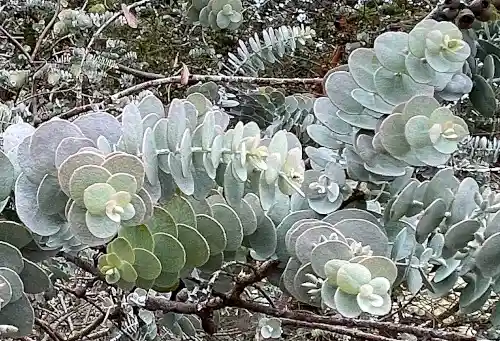
Origin
Eucalyptus kruseana is endemic to southern Western Australia, where it naturally thrives in the rugged, harsh semi-arid region with sandy or gravelly and nutrient-poor soils.
These regions are known for their sparse rainfall, high temperatures during summer, and cooler winters that demand remarkable resilience from native flora. Over time, Eucalyptus kruseana has evolved to adapt to these challenging conditions.
Its natural habitat – often found among scrublands and open woodland areas – has imbued the tree with a distinct character and an enduring, weathered beauty. Bookleaf Mallee is valuable to drought-prone landscapes, offering a slice of authentic Western Australian wilderness.
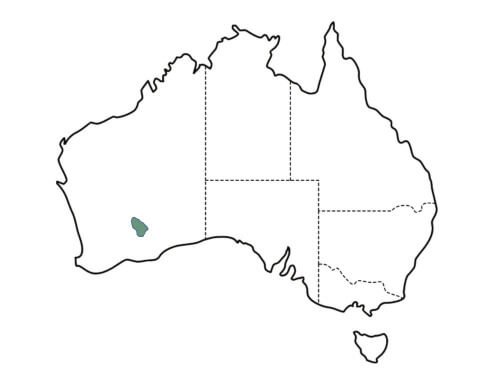
Features
Eucalyptus kruseana is celebrated for its distinctive ornamental features that set it apart from other mallees. Its most noteworthy characteristic is the stunning round or heart-shaped silvery blue or green juvenile leaves, which persist throughout the tree’s life.
These beautiful leaves are developed as the branch extends, in opposite pairs and with alternate orientations at a 90-degree angle. This arrangement results in an intriguing overlapping pattern reminiscent of book pages, a unique attribute that gives the species an almost ethereal quality.
Another feature of this species is its straggly form. The twisted branches extend in irregular, unpredictable ways, highlighting its authentic, rugged beauty that captures the essence of the outback.
Bookleaf Mallee does not produce large flowers like some of its relatives. It produces dainty creamy- or green-yellow blooms in tight clusters from late summer to winter, adding seasonal interest to the plant.
In its early years, Bookleaf Mallee appears more compact. As the plant ages, the sprawling habit becomes more prominent. Bookleaf Mallee can develop into a spreading, multi-stemmed shrub or a single-stemmed small tree, with its width often exceeding the height.
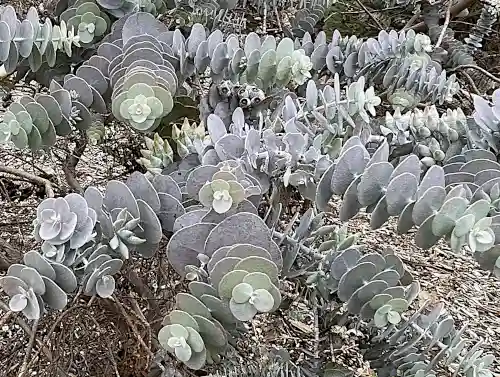
Plant growth
Eucalyptus kruseana is well adapted to the challenging conditions of its native habitat. It thrives in full sun and is best suited to well-drained, sandy soils that mirror its natural environment.
It flourishes in nutrient-poor soils and tolerates periods of drought. The plant requires only minimal water once it is established. Eucalyptus kruseana is tolerant of frost and cold snaps (down to -8°C), an unusual trait for a native plant derived from the hot and dry semi-arid zone.
With a resilient growth nature, Eucalyptus kruseana tolerates hard pruning. Persistent pruning is crucial to achieve an appealing form and dense growth, especially while the plant is younger.
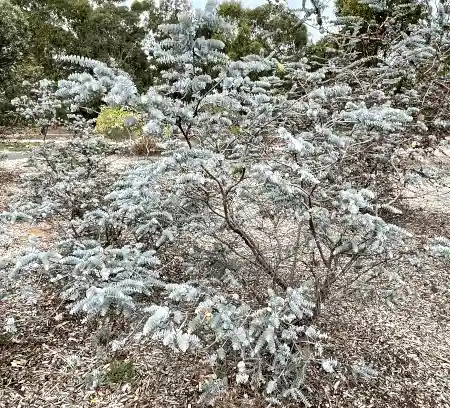
Landscape uses
The compact nature and unique aesthetic of Eucalyptus kruseana make it an exceptional choice for various landscape applications. Its modest height and slow-growing nature are ideal for small gardens, urban courtyards, and container plantings.
As a specimen tree, Bookleaf Mallee offers an interesting focal point that draws the eye with its distinctive foliage and straggly form. It is a living work of art, adding a touch of wild, untamed beauty to modern garden designs.
Its multi-stemmed spreading habit allows it to be used as a natural screen or informal hedge, softening the edges of hardscape areas and adding privacy without overwhelming the space.
Its resilience and low-maintenance requirements make it ideal for sustainable and water-wise landscapes. The tree’s ability to thrive in nutrient-poor soils makes it suitable for challenging urban sites with inconsistent soil quality.

